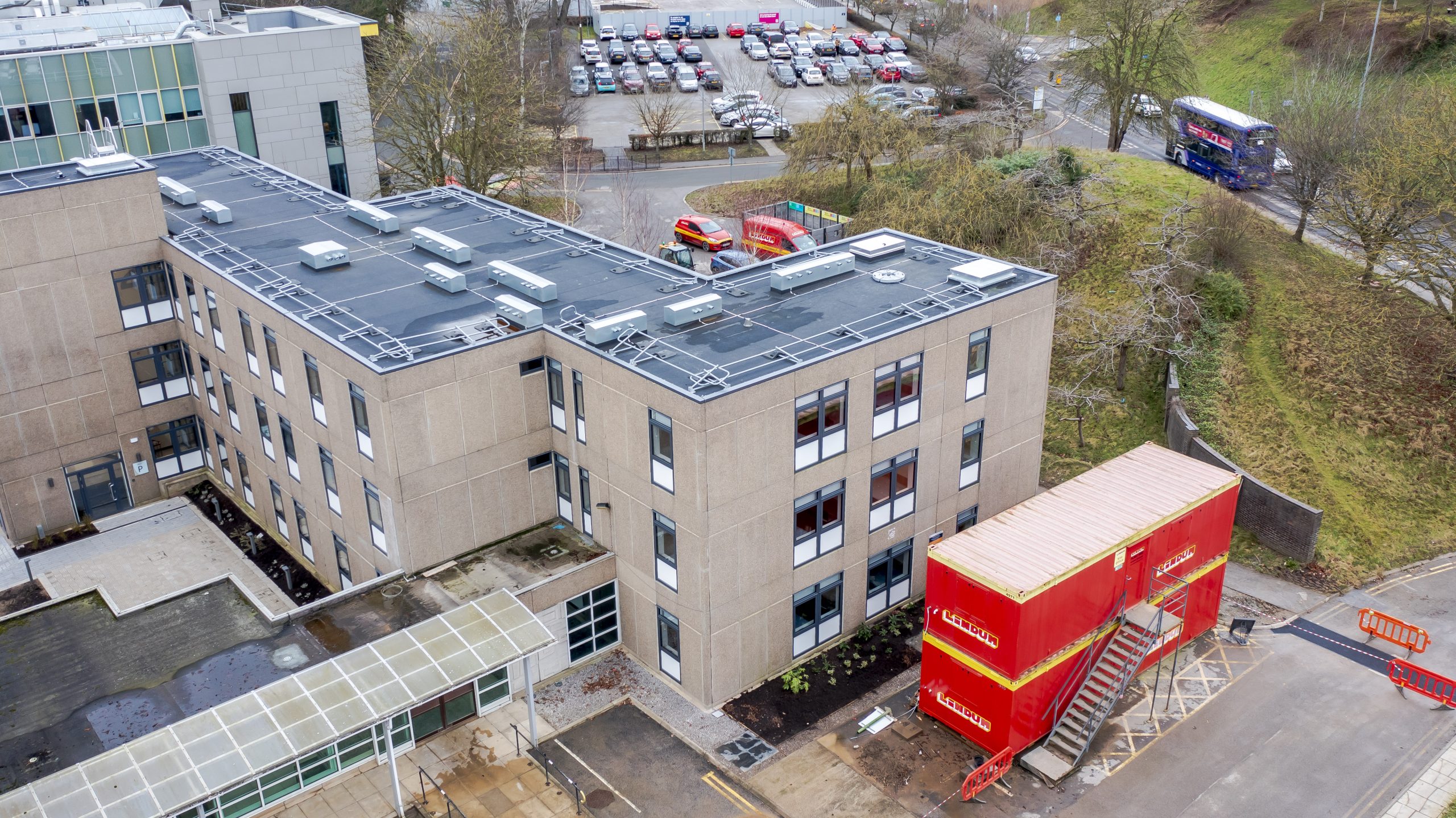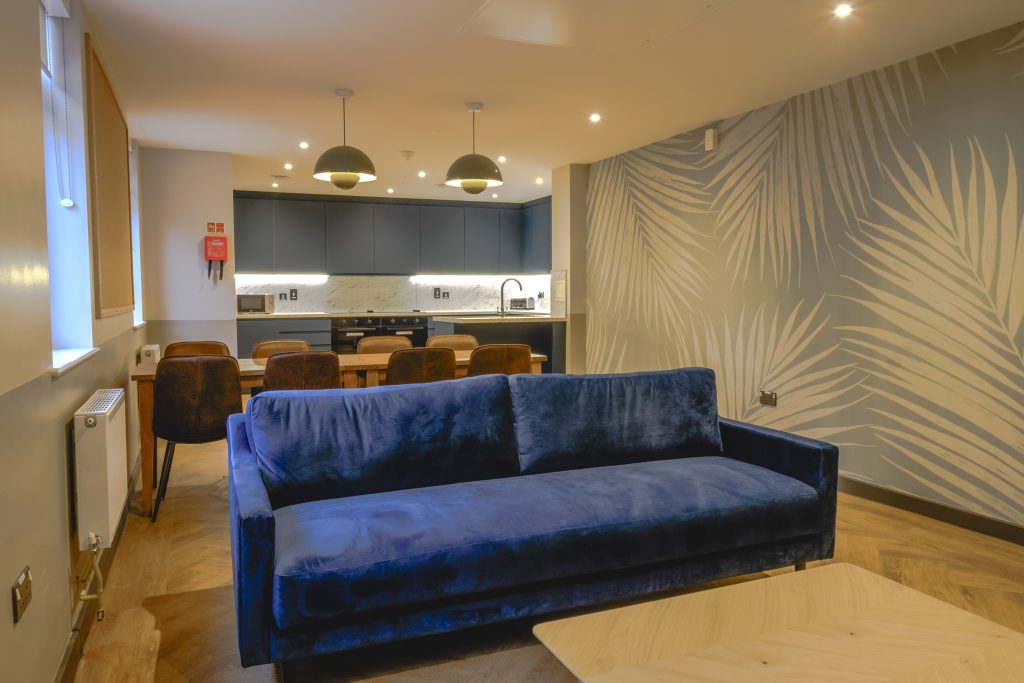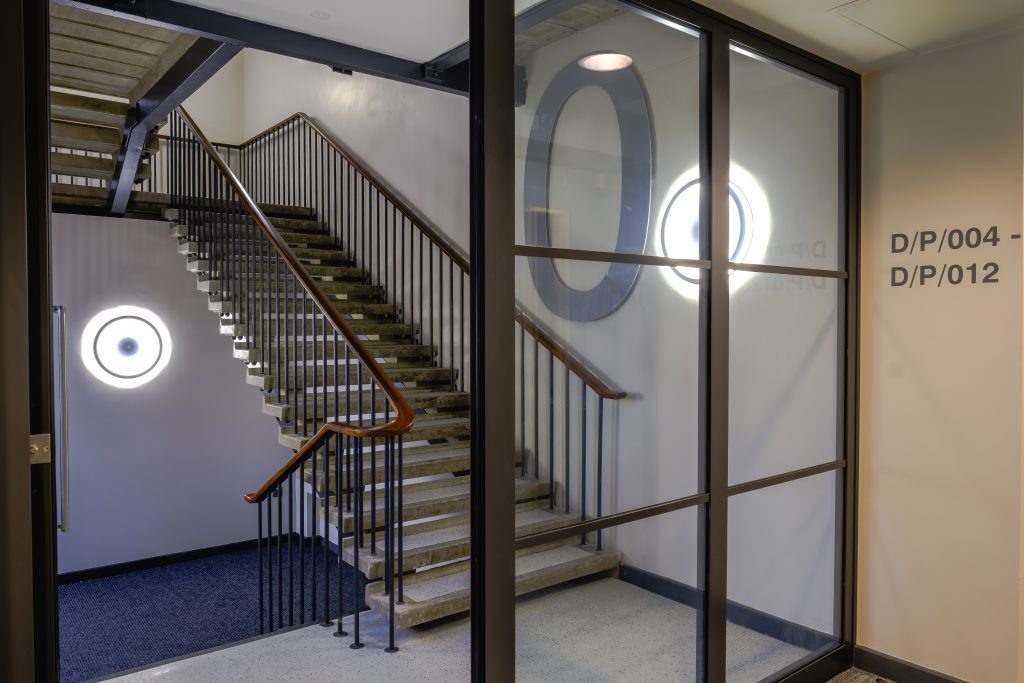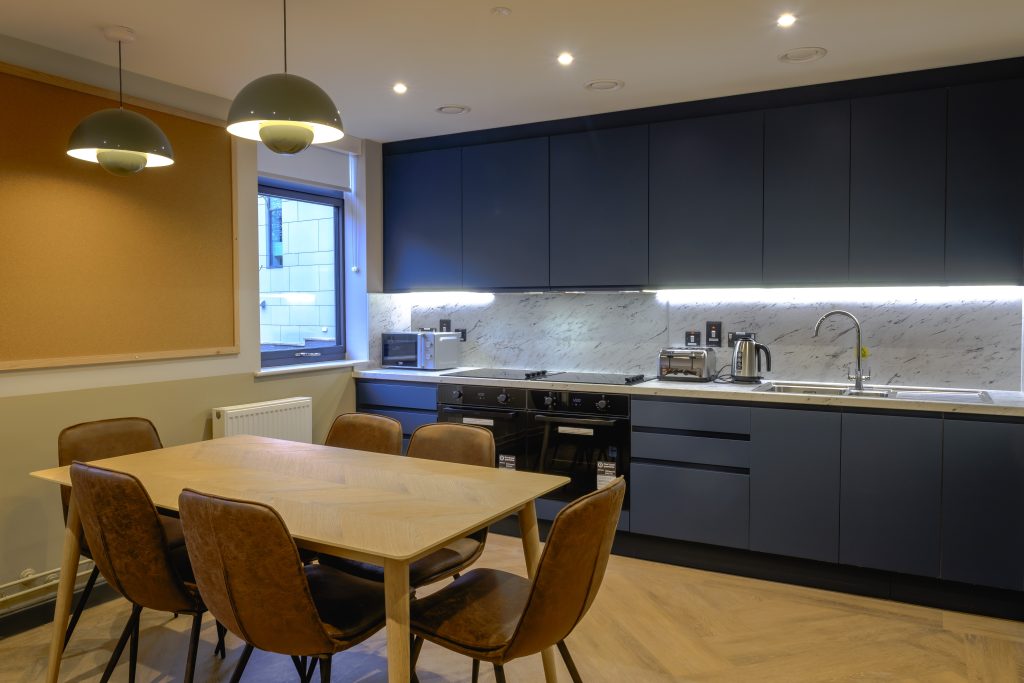- Lindum York completed the refurbishment of the student accommodation block, blending historical features with contemporary living
- The building was originally built between 1963 and 1967
- The external cladding, steel frame, and staircase were all protected as part of the Grade II listing
Lindum has completed the refurbishment of the University of York Grade II listed CLASP Derwent P-Block student accommodation block.
The work involved internal and external alterations, including creating 57 fully furnished en-suite bedrooms, six shared-use kitchens, and a new plant room. Externally, the roof and windows were replaced, and concrete panels were repaired and cleaned.
The newly refurbished student accommodation building is designed to provide a modern and contemporary interior that blends well with the listed heritage features throughout the building.
Rebecca Barnfather, Director of Technology, Estates, and Facilities at University of York, said: “Through collaborative efforts with Lindum, the University of York is proud to be at the forefront of enhancing our commitment to student well-being and comfort.
“Lindum’s contributions have been instrumental in navigating the complexities of this refurbishment, transforming challenges into opportunities. This project exemplifies the University of York’s commitment to elevating the quality of student accommodation, and we are delighted with the results achieved through this collaborative venture.”
The Derwent P-Block is Grade II listed, despite being less than 60 years old. The Derwent college was one of the first universities built using the CLASP (Consortium of Local Authorities Special Programme) prefabricated system, a light-gauge steel building system that was introduced after the Second World War that resulted in significant cost savings.
James Nellist, Managing Director of Lindum York, said: “We have been delighted to support the University of York in helping to update, improve, and add to the current on campus student accommodation offering.
“Ensuring we protected the historic importance of the Grade II listed building by preserving the exterior cladding and steel frame was of utmost importance, whilst also creating a modern and functional living environment for the student occupants.
“We look forward to seeing the building back in use, providing a safe and comfortable place for students to call home whilst studying in York.”
The block was originally built between 1963 and 1967 and had 10 offices, 54 bedrooms and six communal kitchens. The refurbishment involved stripping it back to the steel frame while retaining the listed concrete staircase and exterior wall panels.
The work was procured through the first version of Pagabo’s Refit and Refurbishment Framework. David Llewellyn, Head of Construction and Infrastructure at Pagabo, said: “We are delighted to see this project procured through our Refit and Refurbishment Framework following a further competition process.
“It is great to see a project that will have lasting impact through improving the facilities and living standards of students at the University of York for years to come.”
Our project team achieved an impressive 44/45 in a site audit by the Considerate Constructors Scheme. The CCS, an independent body which aims to raise standards in construction, rated the site ‘Excellent’.
The CCS said: “The site represents the industry in a most positive light. It has smart, well-maintained and secure boundaries and is being kept clean and tidy internally, with materials stored in a way that minimises visual intrusion despite the highly constrained site footprint.
“A high level of attention is being paid to keeping boundaries and roadways clean and to ensuring the safety of cyclists and pedestrians.”
The CCS also highlighted our measures to protect the natural environment, reduce waste and our carbon footprint, and enhance employee and supply chain awareness of these issues.
In addition, our positive health and safety culture, supportive and inclusive working environment and carefully planned and well-maintained welfare facilities won praise.




